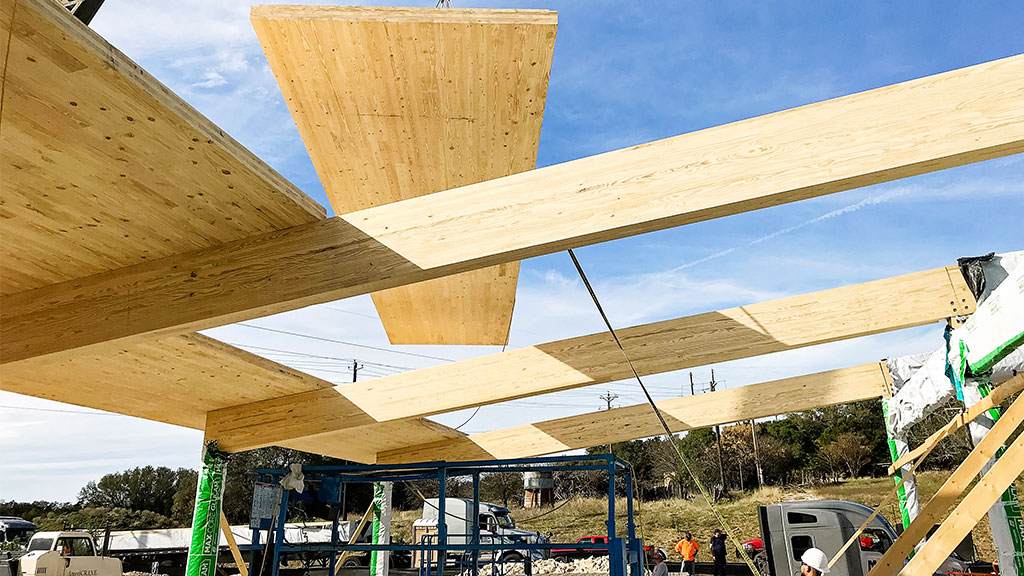Now Is the Time to Reinvest in Local Materials
October 26, 2021 | By Rives Taylor
Editor’s Note: This piece was original published in April 2020 as part of Gensler’s Impact by Design 2020 report. It has been updated to reflect the current conditions in Fall 2021.
In a recent article, The New York Times laid out the wide range of industries and consumer goods currently affected by disruptions to the global supply chain: “Just about anything that is produced or manufactured —from chemicals to electronics to running shoes” is in short supply due to a lack of materials or delays somewhere in the process. For the U.S. building sector, these shortages began even earlier in the pandemic, in February and March of 2020, when materials such as Italian marble and Chinese copper became especially scarce.
What if we saw the supply chain crisis as an opportunity to reduce greenhouse gas emissions worldwide? According to Forbes, shipping alone makes up 3% of all emissions and 10% of transportation-related emissions.
By sourcing all materials and products exclusively from local, regional, or domestic sources, we could make serious inroads toward cutting down on the carbon emissions associated with the building environment. The lockdowns and quarantine orders in the first half of 2020 improved air quality across the globe by reducing transportation-related emissions — and sourcing locally could do the same.
The benefit to the carbon footprint of the construction industry could be enormous. The building sector accounts for nearly 40% of annual greenhouse gas emissions, and over a quarter of that is due to embodied carbon, the impact of extracting, manufacturing, and transporting construction materials. Globally, building materials currently account for 11% of emissions; however, as building operations get more efficient over the next three decades, embodied carbon could rise to represent about half of building-related emissions, according to Architecture 2030. Minimizing materials impact is a powerful tool for fighting climate change.
Theoretically, this should be easy to achieve. Regardless of the delays in Italian marble and Chinese copper shipments, the U.S. is actually the world’s fourth largest copper producer, and we also produce more than 600,000 tons of granite and marble annually. The Jefferson Memorial and the Supreme Court both are made of domestic marble. Why are we going abroad for these materials in the first place?
The Department of Commerce notes that the U.S. is China’s second largest source of imports for construction materials, with a 13-percent import market share. So, we’re shipping materials to them, while they’re shipping materials to us. What would happen if both countries did more with the materials found on their own shores?
In fact, for millennia this has been the mainstay of cultures the world over. Vernacular and indigenous building traditions always have relied on local materials—igloos are made from ice, cliff dwellings were carved from the cliffs themselves, and log cabins aren’t made from imported logs. Largely these traditions are due to the materials being readily available, but those materials also enhance performance because they are well suited to local climate. Adobe, which has been used for centuries across the American Southwest, has a high thermal mass that keeps buildings cool in the region’s scorching heat. Since ancient times, structures in Japan have been composed of cypress because of its resistance to the mold and rot that can easily occur in the island nation’s wet, humid climate.
Such signature materials are inextricably tied to the culture of places. Try to picture Taos or Santa Fe without adobe or Nantucket without weathered gray shakes and shingles. Local materials can strengthen the identity of a community and provide people with a sense of comfort and familiarity, a connection to the land, and an awareness of their responsibility for the surrounding environment; when materials come from nearby, as opposed to some far-flung spot, we can more easily see the impact of our consumption and are more likely to act as stewards of our most precious resources. And that stewardship can pay off in surprising ways.
For example, in environments where mass-timber construction is appropriate, the cultivation and use of such products can be a central part of a sustainable forestry regimen. And given the prevalence of forest fires in places such as California and Australia, the stewardship of wooded areas is becoming increasingly important.
There is ample evidence to suggest that many of today’s wildfires are due not only to climate change but also to our poor management of forests. Strategically thinning woodlands — by felling weaker, smaller trees for use in buildings — can help reduce the fuel that causes these fires to rage.
Yet no matter what local materials we select, it’s imperative that we consider how they’ll play out over the lifecycle of the buildings and spaces in which they’re used.
So, we should ask ourselves several key questions: Might we rethink the materiality of spaces to allow for disassembly or recoverability? Can we engineer building materials in a way that allows them to be durable but also capable of returning to the earth through composting or other organic means? And can we find unexpected sources of local materials?
One potential model for innovative sourcing and production may lie in agrifiber, which is made from agricultural products such as the straw left over from the cultivation of wheat, barley, rice, and other food staples. Often, these materials are destroyed, but we now have the technology needed to turn them into viable and environmentally responsible wood alternatives.
New kinds of materials soon could become essential, given the explosive growth of cities. It’s estimated that through the middle of this century, an average of 13,000 buildings a day will need to be constructed to keep pace with the current rate of urbanization.
What’s driving that urbanization, be it in Lagos, Nigeria, or Austin, Texas, is a desire for people to address their unmet needs collectively. Often, those needs are economic, but just as often they relate to culture and place, supported by a healthful built environment. We need look no further than right outside our doors for the basic material of those urban experiences.
For media inquiries, email .

